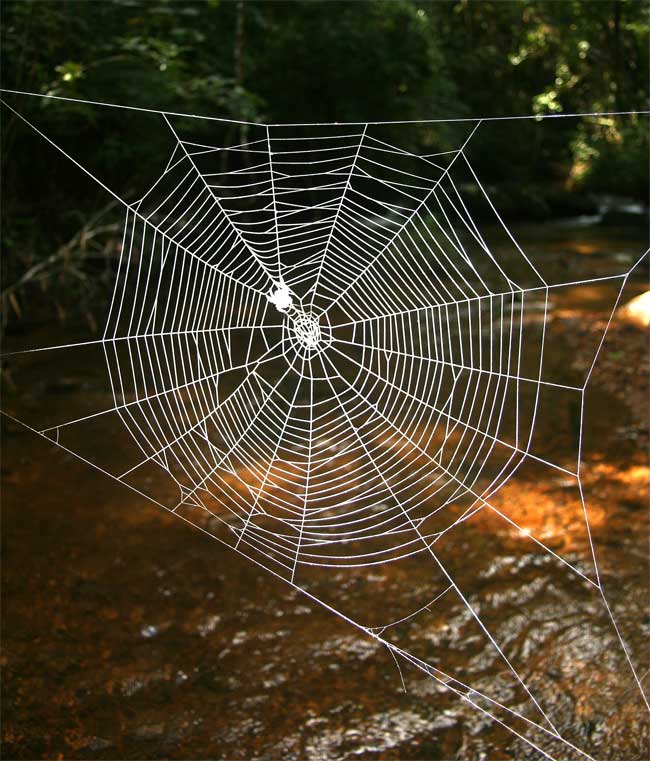Itsy Bitsy Spider's Web 10 Times Stronger Than Kevlar

Scientists have found the toughest material made by life yet — the silk of a spider whose giant webs span rivers, streams and even lakes.
Spider silks were already the toughest known biomaterials, able to absorb massive amounts of energy before breaking. However, researchers have now revealed the Darwin's bark spider (Caerostris darwini) has the toughest silk ever seen — more than twice as tough as any previously described silk, and more than 10 times stronger than Kevlar.
Evolutionary biologist Ingi Agnarsson, director of the museum of zoology at the University of Puerto Rico, and his colleagues discovered the spider in Madagascar's Ranomafana National Park in 2001. "Our initial reaction was simply 'Wow!'" he said.
The spider's wheel-shaped orb webs could range up to 30 square feet (2.8 square meters) in size, some of the largest in nature, and dangle over streams, rivers and small lakes up to 82 feet (25 meters) across.
"It can be difficult to get to these webs when they are above large bodies of water," Agnarsson said. "We often missed having a boat in the field, which is not something on the normal list of equipment for spider fieldwork." [See the giant spider web.]
These giant webs allow the spiders to snare unsuspecting mayflies, damselflies, bees and dragonflies flying over the water. There is no evidence so far that these webs can catch larger prey — "a bird or bat would be such a tremendously large meal that a spider might only need to capture them once or twice over its lifetime, a rare event that we'd have to be really lucky to observe," researcher Todd Blackledge, an evolutionary biologist at the University of Akron in Ohio, told LiveScience. (Females are about 1 inch, or 2 centimeters, in body length, while males are much smaller at about a quarter of an inch, or 6 millimeters, in body length.)
Although scientists have investigated silks from 20-to-30 species of spiders before, most of these were chosen haphazardly — for instance, from researchers' backyards. Agnarsson and his colleagues analyzed the silk from this newfound spider, reasoning that it would prove especially tough given the lengths to which it could stretch.
Get the world’s most fascinating discoveries delivered straight to your inbox.
The researchers collected a few adult female Darwin's bark spiders, raised them in greenhouses, and studied the silk 24 hours after it was spun. Silk strands were fastened to hooks in equipment that slowly pulled the fibers apart, and the scientists measured how much stress the strands could take before breaking. The key to its extraordinary toughness seems to be its elasticity — the silk is roughly twice as elastic as that of other orb-web-weaving spiders' silk.
This discovery "opens up new technological applications for spider silk that capitalize on C. darwini silk's truly impressive combination of light weight and high performance," Blackledge said. Either these spiders are using a novel type of protein to spin their silk, or they have evolved a new mechanism for the spinning itself. A better knowledge of either could help develop artificial silks that mimic the strength of the natural silk, he explained.
Many extraordinary spider silks might await discovery, the researchers noted.
"There are over 40,000 species of spiders and each spider can produce up to seven different kinds of silk. Thus, more than 99.99 percent of spider silks are as yet unexplored," Ignarsson said. "It would not be unexpected to find novel characteristics among all those unexplored spider silks."
The scientists detailed their findings online Sept. 15 in the Journal of Arachnology and Sept. 16 in the journal PLoS ONE.



